Electrochemical regioselective synthesis of N-substituted/unsubstituted 4-selanylisoquinolin-1(2H)-ones
Zhi-Lin Wu,Jin-Yang Chen,Xian-Zhi Tian,Wen-Tao Ouyang,Zhuo-Tao Zhang,Wei-Min He
School of Chemistry and Chemical Engineering,University of South China,Hengyang 421001,China
ABSTRACT A novel and efficient electro-chemical initiated radical strategy was developed for the preparation of both N-substituted and N-unsubstituted 4-selanylisoquinolin-1(2H)-ones through selenylation of isoquinolin-1(2H)-ones with organodiselenides under chemical oxidant-,additive-free and ambient conditions.
Keywords:Organodiselenide Electrochemistry Radical Atom economy Additives-free
Selenium-containing organic compounds have received much attention in the field of pharmaceutical chemistry and material science,given their diverse biological activities and fluorescent properties [1–4].In particular,researches have demonstrated thatN-heterocycles modified with organylselanyl group exhibit unique pharmacological activities and physicochemical properties,and thereby have higher applied value.As a consequence,plenty of efforts have been made in developing novel methods for preparing such compounds [4–13].The cross-coupling reaction ofNcontaining heterocycles with organodiselenides is regarded as an efficient synthetic approach,which has the advantages of atom economy,simplified procedures,and easy availability of cheap raw materials [14–20].
Isoquinolin-1(2H)–one skeleton is the core structure of many natural products and marketed pharmaceuticals [21–23].Although selenium can bring positive effect to the physiochemical properties of bioactive molecules and drugs,the methods of introducing organic selenium groups into isoquinoline-1(2H)-ones are still limited,and the related research seriously lagging behind can no longer meet the social needs.So far,only two approaches available for constructing selenylated isoquinolin-1(2H)-ones have been reported.In 2018,Zhu and colleagues pioneered the synthesis ofN-unsubstituted 4-selanylisoquinolin-1(2H)-ones through AgSbF6-mediated selanylation of isoquinolin-1(2H)-ones and organodiselenides (1 equiv.)viaa radical pathway at high temperature [24].Recently,Cao’s group developed the electrochemical synthesis ofN-alkyl 4-selanylisoquinolin-1(2H)-ones fromNalkylisoquinolinium salts and organodiselenides (1 equiv.) with KI as the electrolyte and Cs2CO3as the base under oxygen atmosphere,in which the selenium cation was key intermediate [25].These achievements may be significant,but they cannot offset the excessive demand for harmful chemical oxidants,additives and organodiselenide reagents,which not only increases the manufacturing cost,but also causes environmental problems.Furthermore,the above methods cannot be applied to the synthesis of bothN-unsubstituted andN-substituted 4-selanylisoquinolin-1(2H)-ones at the same time.Therefore,an eco-friendly,economically and generally method for the synthesis of bothN-substituted andNunsubstituted 4-selanylisoquinolin-1(2H)-ones is still highly desirable.
In recent years,organic electrochemistry,as an efficient and environmentally benign way to construct chemical bonds,has attracted extensive attention [26–31].In many cases,the usage of harmful bases,chemical oxidants,reducing agents or even catalysts could be avoided during the electro-synthetic process,which meets with the green chemistry principles [32–41].With our continuing study in green chemistry [42–48],herein we report an electrosynthetic reaction for the construction of bothN-substituted andN-unsubstituted 4-selanylisoquinolin-1(2H)-ones under chemical oxidant- and base-free conditions (Scheme 1c).
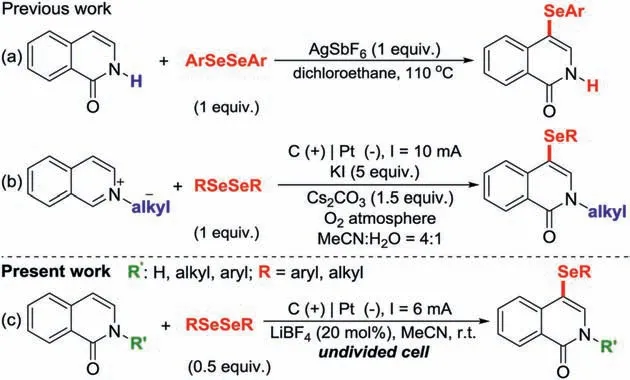
Scheme 1.Synthesis of 4-selanylisoquinolin-1(2H)-ones.
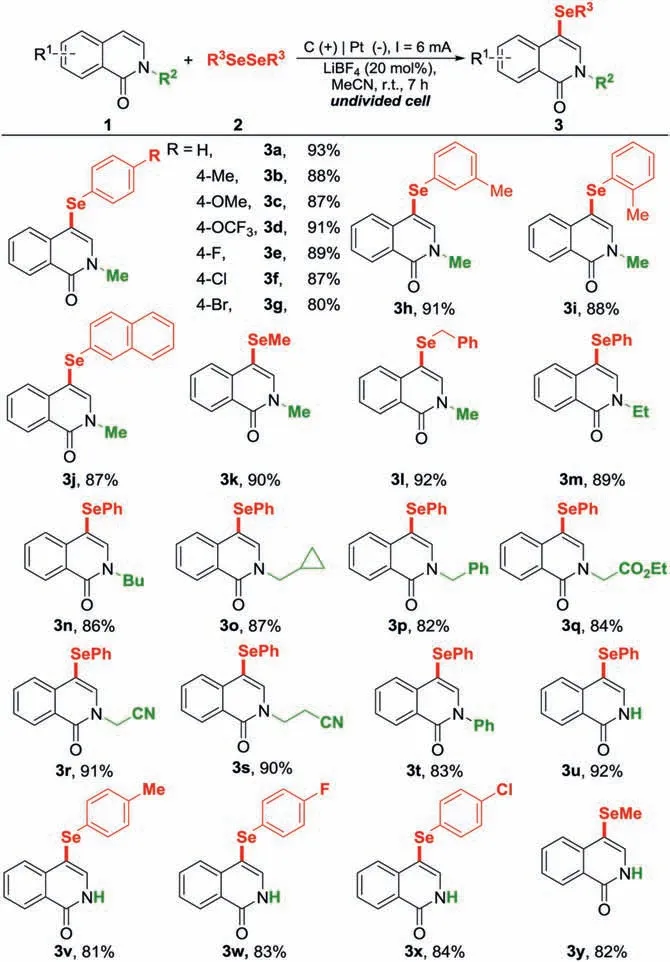
Scheme 2.Reaction scope.Conditions: Pt plate (15 mm × 15 mm × 0.3 mm) cathode,graphite rod (φ 6 mm) anode,constant current=6 mA,1 (0.5 mmol),2(0.25 mmol),LiBF4 (0.1 mmol),MeCN (8 mL),room temperature,in air,7 h,undivided cell.
Initially,the electrochemical reaction ofN-methyl isoquinolin-1(2H)-one (1a) and diphenyl diselenide (2a) was selected as the template reaction.By using a graphite rod as the anode,a platinum plate as the cathode,and LiBF4(20 mol%) as the electrolyte,the desired product 3a was formed in 95% NMR yield under 6 mA constant current at ambient temperature in an undivided cell (Table 1,entry 1).Next,a number of electrode materials were screened to improve the reaction efficiency.However,inferior results were obtained when the graphite rod anode/platinum plate cathode system was replaced by other electrode systems (entries 2–7).The solvent effect was subsequently examined.Either trace amount or a much lower yield of 3a was detected in EtOH,DMSO,DCM,or THF (entries 8–11).As anticipated,the nature of electrolytes played a key role on this reaction.Both H4NI and KI only gave trace amount of 3a,whereasn-Bu4NBF4and Et4NClO4provided 3a with moderate yields (entries 12–15).Reducing the LiBF4loading to 10 mol% marginally decreased the reaction efficiency (entry 16).Varying the loading of 2a and constant current did not deliver improved yield of 3a (entries 17–19).As a blank experiment,no product was afforded when this reaction was conducted in the absence of constant current (entry 20).
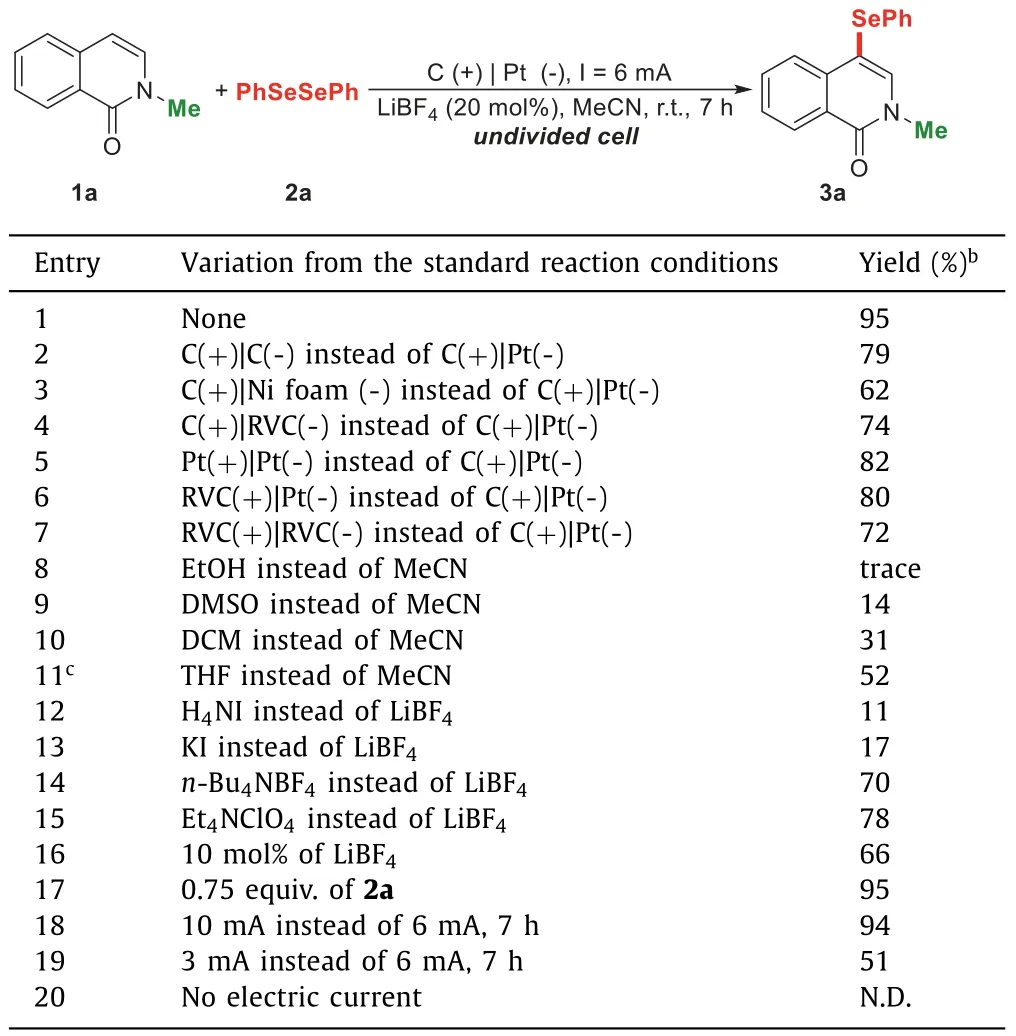
Table 1 Optimization of reaction condition.a
With the optimal reaction conditions (Table 1,entry 1),the generality of organodiselenides and isoquinolinone was comprehensively investigated and the results were summarized in Scheme 2.To our delight,a variety of organodiselenides reacted withNmethyl isoquinolin-1(2H)-one (2a) smoothly,delivering the target products with yields in the range of 80%–93%.Diphenyl diselenides 2 bearing electron-donating or -withdrawing groups at theparaposition of the phenyl ring participated in this transformation efficiently and provided the desired products (3b-3g) in good to excellent yields.Employing diphenyl diselenides with oneortho- ormeta-methyl group did not impede the formation of product 3h and 3i.The bulky 1,2-di(naphthalen-2-yl)diselane could also survive in the electrochemical reaction system,affording the desired product 3j in 87% yield.Isoquinolin-1(2H)-ones with alkyl groups of different chain lengths and isomeric structures at the N-atom underwent this reaction smoothly and provided the corresponding products (3m-3s) in 82%-91% yields.A series of functional-groups,such as alkyl (3m and 3n),cyclo-propylmethyl (3o),benzyl (3p),ester (3q) and cyano (3r and 3s) were proved to be entirely compatible in this reaction.As both of the previous reported methods did not work with 2-phenylisoquinolin-1(2H)-one,we were very keen to see how it would work in our system.To our delight,2-phenylisoquinolin-1(2H)-one were smoothly converted into the corresponding product 3t in 83% yield.Furthermore,theNunsubstituted isoquinolin-1(2H)-one reacted as well with 2a,delivering the selenylated products (3u-3y) in 81%–92% yields.
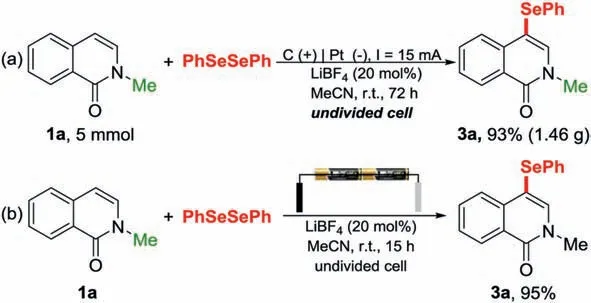
Scheme 3.Large-scale synthesis of 3a and synthesis with battery.
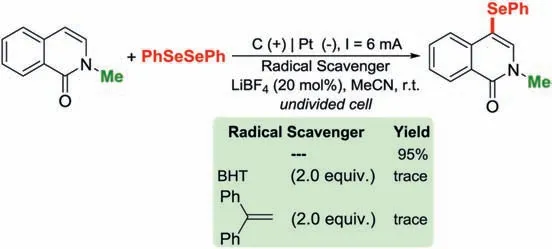
Scheme 4.Control experiments.
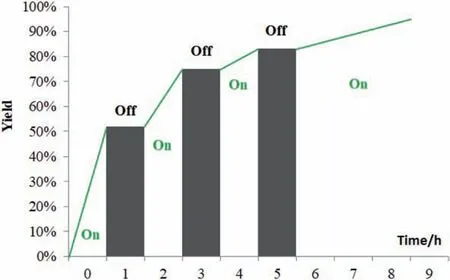
Fig.1.Electricity on/off experiment
To prove the scalability of this protocol,the large-scale synthesis of selenylated isoquinolin-1(2H)-one was performed.Performing the electrochemical selenylation with 5 mmol 1a gave the desired product 3a in 93% isolated yield.In comparison to the smallscale reaction,the concentration of 1a could be increased 3.75-fold in gram-scale synthesis,thus minimizing the solvent consumption(Scheme 3a).It is well-known that battery is an abundant and readily available power supply.To our delight,the present electrochemical transformation could be easily achieved by employing 3-volt battery as the sole power supply (Scheme 3b).Taken together,the developed electrochemical protocol showed both practicability and simplicity.
To address the mechanistic aspects of the present electrochemical reaction,we conducted some mechanistic research.Firstly,the standard reaction was fully suppressed in the presence of radical scavengers (BHT and 1,1-diphenylethylene) [49].The results of radical capture experiment suggested that this reaction may proceedviaa radical pathway (Scheme 4).Secondly,the electricity on/off experiments revealed that the present reaction did not proceed without constant current (Fig.1),thus ruling out the free-radical chain mechanism.Eventually,the cyclic voltammetry experiment was conducted to gain information about the redox potential of the substrates.As shown in Fig.2,the diphenyl diselenide 2a was oxidized at 1.10 V (vs.Ag/AgCl),which was lower than that ofNmethyl isoquinolin-1(2H)-one 1a (1.29 V),and similar result was observed for the mixture of 1a and 2a,suggesting that 2a is oxidized preferentially at the surface of the anode in the developed reaction.
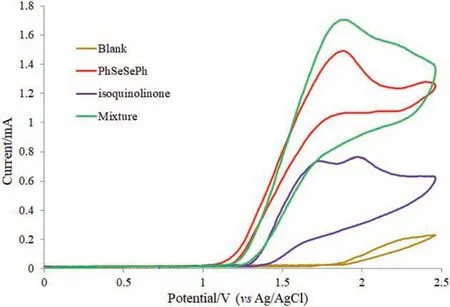
Fig.2.Cyclic voltammetry experiment.
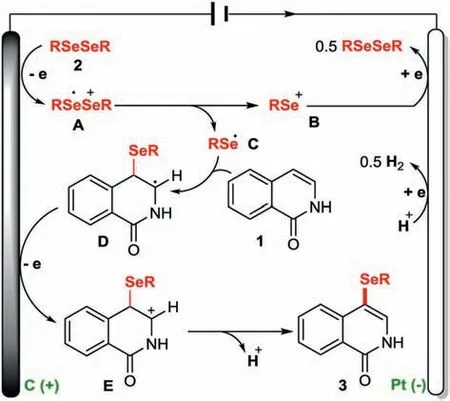
Scheme 5.Plausible reaction mechanism.
Taking into account the experimental information and the previously reported literature [24,50,51],the possible mechanism for this electrochemical reaction is shown in Scheme 5.Firstly,the organodiselenide (2) underwent one-electron oxidation at the anode and was converted into the organodiselenide radical cation intermediate (A),which decomposed into an organ selenium cation(B) and an organ selenium radical (C).The intermediate B got one electron at the cathode and regenerated the compound 2 for the next cycle.Simultaneously,the radical C attacked C4 position of isoquinolin-1(2H)-one to produce radical D,which underwent oneelectron oxidation to form isoquinolin-1(2H)-one cation (E).Ultimately,the intermediate E underwent dehydrogenation and rearomatization to form the desired product 3.During the electrolysis process,the sole byproduct H2was formedviaone-electron reduction of the proton at the cathode.
In summary,an environmentally friendly electrochemical initiated radical strategy was established for constructing bothNsubstituted andN-unsubstituted 4-selenylatedisoquinolin-1(2H)-ones (25 examples,80%–93% yield).The present reaction,promoted by traceless and renewable electron,can be operated at ambient temperature under mild conditions,requiring neither chemical oxidants nor bass additives to proceed smoothly across a board range of selenylated quinolin-1(2H)–ones.Importantly,this reaction has achieved 100% atom economy with respect to expensive organodiselenides.The easily operated reaction conditions are neutral and mild,tolerating a variety of functional groups,and affording high yields with scalability.This methodology provides a new and effective way for the synthesis of 4-selenylatedisoquinolin-1(2H)-ones for pharmaceutical and fine chemical industry.
Declaration of competing interest
The authors declare that they have no known competing financial interests or personal relationships that could have appeared to influence the work reported in this paper.
Acknowledgments
We are grateful for financial support from Hunan Provincial Natural Science Foundation of China (Nos.2019JJ50506 and 2019JJ20008) and Project supported by the Research Foundation of Education Bureau of Hunan Province (No.19B501).
 Chinese Chemical Letters2022年3期
Chinese Chemical Letters2022年3期
- Chinese Chemical Letters的其它文章
- Direct catalytic nitrogen oxide removal using thermal,electrical or solar energy
- Construction and applications of DNA-based nanomaterials in cancer therapy
- Recent research progress of bimetallic phosphides-based nanomaterials as cocatalyst for photocatalytic hydrogen evolution
- Nanostructured materials with localized surface plasmon resonance for photocatalysis
- Recent progress of Pd/zeolite as passive NOx adsorber: Adsorption chemistry,structure-performance relationships,challenges and prospects
- Microfluidic methods for cell separation and subsequent analysis
